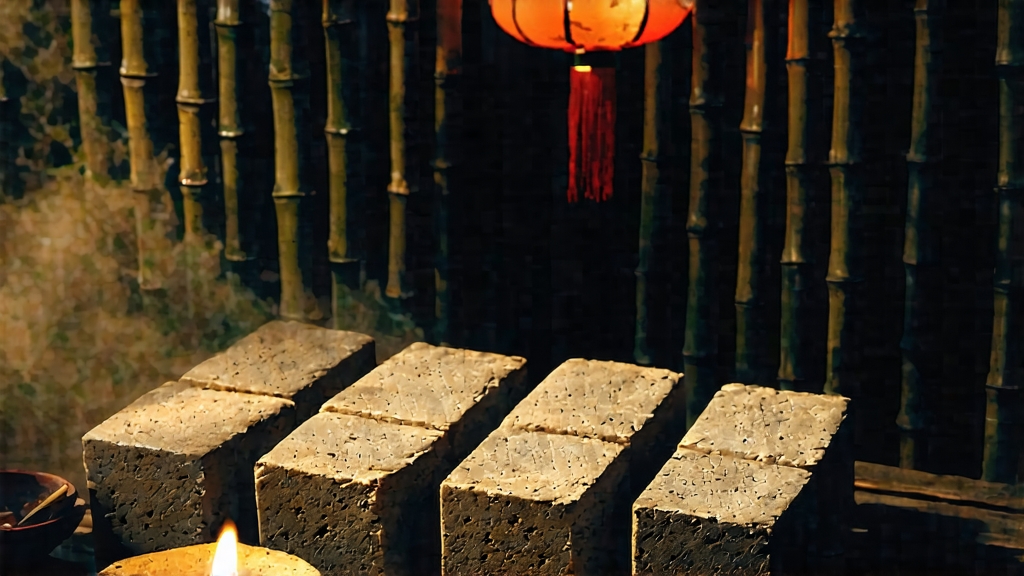
Tucked away in the humid, karst-studded mountains of southern Guangxi, Liu Bao (literally “Six Forts”) is the quietest celebrity of China’s dark-tea family. While Pu-erh hoards the global spotlight, Liu Bao has spent four centuries fermenting in obscurity, emerging only recently as the connoisseur’s answer to velvet-smooth depth without the price hysteria. To understand Liu Bao is to witness how geography, trade routes, and microbial serendipity can conspire in a single bamboo basket.
History: From Frontier Currency to Maritime Ballast
The story begins during the Ming dynasty’s tea-horse exchanges, when pressed leaves from the small town of Liu Bao in Wuzhou Prefecture were bartered for horses with mountain tribes. By the Qing, the tea had become ballast aboard Chinese junks sailing the Pearl River to Southeast Asia. The humid hold of a wooden ship turned out to be an accidental aging chamber; upon arrival in Kuala Lumpur or Singapore, the cargo had darkened, mellowed, and acquired a mysterious medicinal sweetness that cooled the body in tropical heat. Malayan tin-mine coolies drank it to prevent malaria, and the British Straits Settlements recorded it as “cooling tea” in 19th-century port ledgers. Thus Liu Bao crossed oceans long before China even had a dark-tea category.
Micro-Terroirs within One Town
Liu Bao is not a single-garden product but a mosaic of micro-terroirs. The township comprises six historical forts—He Ping, Gong Ping, Xing Ping, Fu Ping, Sheng Ping, and Rong Ping—each offering subtle differences in altitude, soil acidity, and mist frequency. Leaves from the higher forts (400–600 m) carry orchid-like high notes, while lower terraces (150–300 m) yield broader leaves with more tannic backbone. Unlike Pu-erh’s celebrated mountain names, Liu Bao villages rarely market themselves separately; instead, master blenders combine leaf from several forts to achieve a house style, much like a Champagne négociant.
Leaf Architecture: Camellia sinensis var. sinensis ‘Xiao Ye Zhong’
The local cultivar is a small-leaf Camellia sinensis genetically distinct from Yunnan’s large-leaf assamica. Its modest leaf area produces a higher bud-to-surface ratio, translating into thicker cell walls that survive the rigorous wet-piling process without collapsing into mush. Old-growth bushes—some 80–120 years old—are maintained as shrubs rather than trees, their roots wriggling into limestone fissures rich in calcium and magnesium, minerals that later manifest as a cooling, almost menthol finish in the cup.
Craft: The Double Fermentation Dance
Liu Bao’s production calendar starts in late April, when pickers pluck one bud plus the third or fourth leaf—larger, more mature material than green tea’s tender standards. The leaves are withered under mountain shade for 3–5 hours, then wok-fried at 200 °C for eight minutes to kill green enzymes. What follows is a twist rarely seen elsewhere: the partly oxidized leaves are immediately packed into 50 kg bamboo baskets lined with palm leaves and steamed for 30 seconds. This “basket steam” softens the cellulose, allowing tight compression without fracturing the leaf.
The first fermentation is a controlled wet-pile (wo dui) lasting 25–30 days. Workers sprinkle 8–10 % water by weight, cover the pile with jute sacks, and turn it every five days to maintain a core temperature of 55 °C. Indigenous microbes—primarily Aspergillus niger, Blastobotrys adeninivorans, and a local strain of Bacillus subtilis—feast on polyphenols, converting catechins into theaflavins and thearubigins that give Liu Bao its signature maroon liquor and betel-nut aroma.
After piling, the tea is sun-dried for only two hours, then moved to dim, airy lofts built from camphor wood. Here the second, slower fermentation begins. Over years, residual moisture migrates toward the center of each basket, creating a humidity gradient that nurtures Eurotium cristatum, the same “golden flower” mold prized in Hunan’s Fu brick. Unlike Fu brick’s visible yellow spores, Liu Bao’s microbes remain invisible, yet they generate a